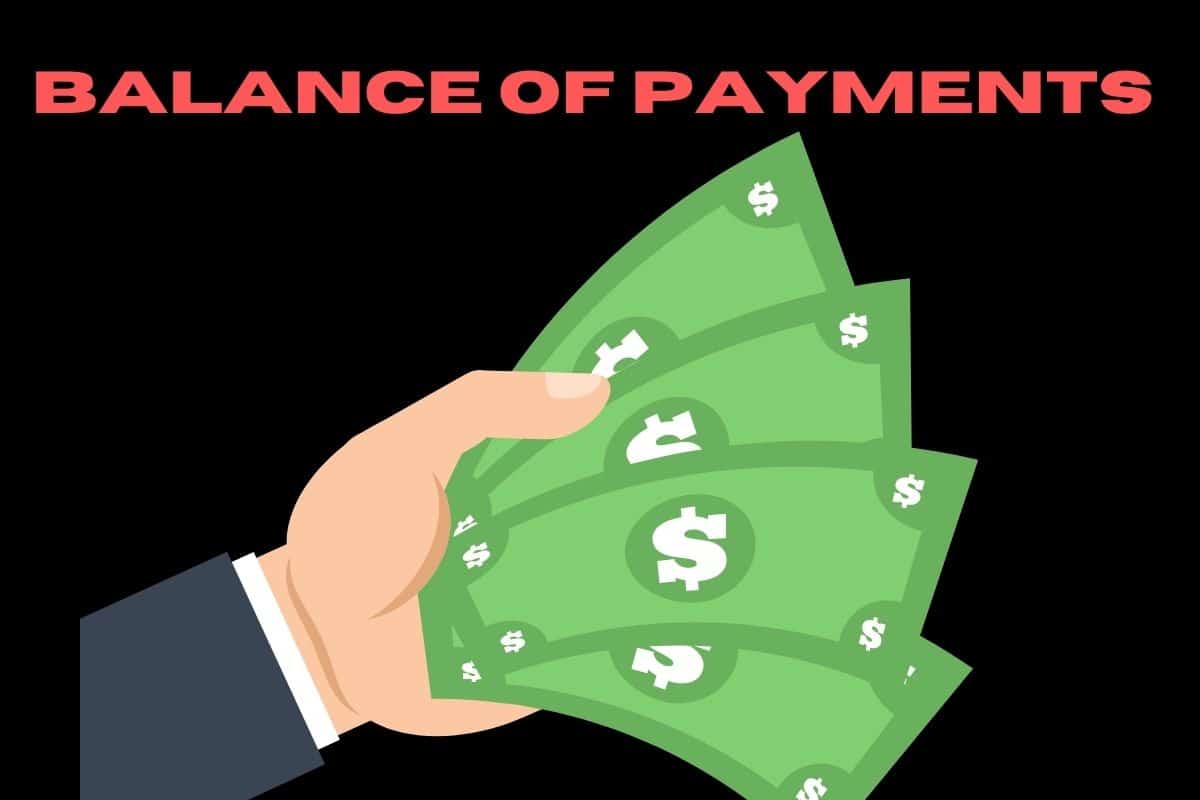What is Balance of Payments?
The balance of payments is a record of all commercial and financial transactions carried out by residents on the ground. The balance of Payments is divided into three main components: Current Account, Financial account, and the Capital account.
Current Account
The current account refers to the stresses that all transactions for the import and export of goods and services, and it is passing through a real-time.
Visible trade: Indian exports of money from your trading (eg cars sold in India), faith (increases) the reason for this is that while the grant imported goods (e.g. flat India, sold in the US) were used to. Is the sum of the difference in the balances of these works, the things that are in the art.
Lamb trade: Indian revenue from the sale of services abroad, which is invisible to export, eg an insurance premium paid by the UK to an Indian shipbroker.
When you have money, are living in the Indian in the streets of the services, such as a week’s accommodation between the parties in London, the invisible things of that to create it implies a kingdom that cometh, the recompense, and out of India.
The main things invisible
- Government expenditure
- Tourism
- Interest, profit
- Private transfers and dividends
- Other financial services
- Transport
Capital account
Investment: Investment includes the capital and other movements. The lack of delivery (-) exits enters and gives a surplus (+) on the ground. For example, if the slave trader inside bought a new shop in London, he was the first to head behind. Conversely, if Toyota (Japan) is building a showroom in Bangalore, an influx is a headache.
Devoured in expense portfolio (paper) is also included in the selection of the right reasons. So if a reward for their participation in Indian McDonald’s and General Motors (USA) as an outflow force of capital.
It can also be private and public investments between the parties. Paper buildings and private sector investments tend to last a long time. Investing for the public, on the other hand, only the accumulation of interests that flow from small countries to underdeveloped countries (i.e. for aid), where the act is not always profitable.
Short or long term flow to the head. In the short term, they tend to be unpredictable and volatile. Changed humor and good functionality favorable signs among people to get the benefit, interest rate spreads.
In the short term, reasons of financing the balance of payments net of the utility of inward investments do not require official repayment – accumulated reserves and loans could be repaid. However, in the long run can not be harmful. What it profits, interest, dividends and in the streets of the investment, and are let down in the unseen things from one source, so they run to weaken the patient.
Balancing Item: this is the coverage of the accounting errors and omissions scheme. A comparison figure is added – or subtracted – combined with the balances of current accounts and capital accounts. Because the balance of payments would always equal the sum of the high capital funding, exciting race pairs.
In order to accurately show how different the reasons given for this last figure were at two other forces, the use of the fruits should be counted from the fact that it is in the comparison of the article so that the sum of two of the same. It is a net number.
PEOPLE ALSO SEARCH FOR: INCOME BOND: Definition and Detailed explanation
Official Financing
Funding for the person Libra (as it is called the Roman flow currency) shows the currency balance and movements. A positive figure reveals a net flow of money into the country. Alternatively, the net output is represented by a negative number.
When this figure cannot be denied, to the extent that it must be or at the cost of:
(a) borrowing from other central banks and international organizations
(b) the use of reserves that have been saved over the years
(c) borrow and withdraw reserves.
When the balance for official financing is positive, we cannot repay their loans and replenish reserves. And sometimes governments borrow, the balance of official financing being positive; To this end, integrate it until the end.
The amount of public funding equal to the balance of government funding for the balance of payments is still over his head.
This funding is in place, and all demands are in balance. This is called the “balance of payments always in equilibrium.
History of the Balance of Payments (BOP)
Prior to the 19th century, all international transactions were conducted in gold, which limited the amount of wiggle room available to nations who were running trade deficits. Due to the slow rate of economic growth, increasing a country’s trade surplus was the best way to improve its overall financial situation. But because there wasn’t much integration between national economies, big trade deficits didn’t always cause crises. Balance-of-payment crises started happening more often because the industrial revolution made it easier for countries to trade with each other.
The Great Depression caused countries to abandon the gold standard and engage in competitive devaluation of their currencies; however, the Bretton Woods system that prevailed from the end of World War II until the 1970s introduced a gold-convertible dollar with fixed exchange rates to other currencies. This system was in place from the beginning of the Cold War until the end of the decade.
However, as a result of the growing money supply in the United States and the country’s widening trade imbalance, the federal government found itself unable to fully redeem the dollar reserves held by foreign central banks in exchange for gold. This led to the abandonment of the system.
Contin…
Since the Nixon shock, also known as the end of the dollar’s convertibility to gold, currencies have been allowed to float freely. This means that a nation that is experiencing a trade deficit has the ability to artificially depress its currency — for example, by hoarding its foreign reserves — in order to make its products more appealing to consumers and increase its exports. Balance-of-payments crises can sometimes arise as a result of the greater mobility of capital across international borders. These crises can lead to significant currency devaluations, such as the ones that hit Southeast Asian countries in the year 1998.
During the height of the Great Recession, a number of nations engaged in a strategy of competitive currency devaluation in an effort to increase their levels of exports. The most important central banks throughout the world at the time all took action that was markedly expansionary in their monetary policy as a response to the ongoing financial crisis. Because of this, the currencies of other countries, particularly those of developing economies, increased in value in comparison to the dollar and the other major currencies.
In response, many of these nations further loosened the constraints on their monetary policy in order to bolster their exports. This was especially true for those nations whose exports were being put under pressure as a result of stagnating global demand during the Great Recession.
Economic Policy and the Balance of Payments
The balance of payments and international investment position data are essential for the formula into national and international economic policy. Some faces balance of payments data to and imbalances paid foreign direct investment, the key issues which are the country’s policymakers address in the search.
Which are the proper ones are more often targeted at the economic policies, on the other hand, an impact on the balance of payments as a general one. For instance, a part of the region attracts foreign investment used in a particular specifically designed to artificially stimulate exports and foreign exchange reserves; the other would want to have to build, as was the custom. The impact of these policies is ultimately not taken into account in the balance of payments data.
What is the Formula for BOP?
Current account + capital account + financial account + balancing item = x
What Are the 3 Components of the Balance of Payment?
A balance of payments consists of three key components: current account, finance account, and capital account. The balance of payments is critical for a variety of purposes, including financial planning and analysis.
What Is Balance of Payments Current Payments and Balance of Trade?
Payments Balance. The difference between a country’s exports and imports of products is the balance of trade, whereas the balance of payments is a record of all foreign economic transactions undertaken by its inhabitants, including commerce in goods and services, as well as financial capital and financial transfers.
What Are the Two Main Components of Balance of Payments?
The balance of payments divides transactions into two major accounts: the current account and the capital account. the combined capital and financial account.
Conclusion
A country has a problem with its balance of payments section of the deficit or surplus from ordinary accounts. The developer left gravely deficient, as it is usually followed by an international trade surplus, as they fail to merge. Persistent imbalances indicate the fundamental imbalance in the balance of payments. Usually requires recourse to the government.
READ ALSO: BAD DEBT EXPENSE – Definition, Estimation & Calculation






